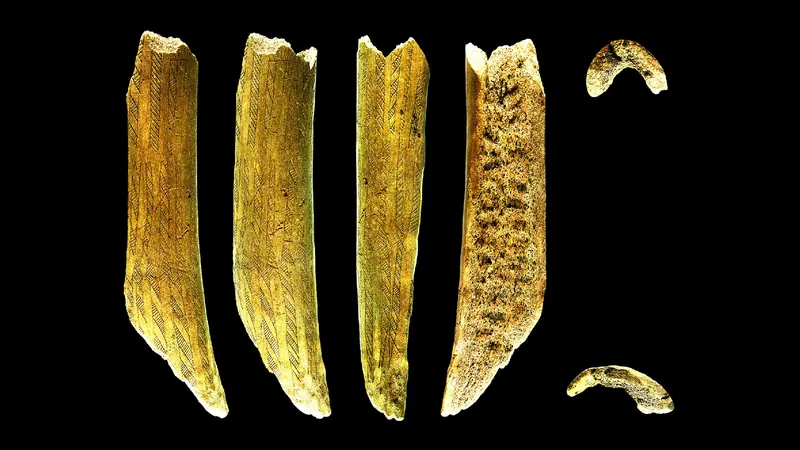
Unveiling the Secrets of a 7,500-Year-Old Antler: From Battle Axe to Fishing Tool!
2025-04-17
Author: Kai
A stunningly ornate antler, dating back 7,500 years and unearthed in central Sweden, tells the story of human ingenuity in the Stone Age, having served both as a battle axe and, likely, a fishing harpoon.
Discovered eight years ago, this remarkable artifact underwent advanced analysis only recently, revealing fascinating insights into its past. According to Lars Larsson, a professor of archaeology at Lund University, the antler was likely wielded as a weapon. "We see similar antler axes in present-day Denmark that show signs of wear from combat," he explained.
Originally found on a stone platform near a river linking Lake Vättern to the Baltic Sea, the antler was part of a rich trove of items, including a bone needle, fishing barbs, stone ax blades, and even fragments of human bones. This discovery at Strandvägen, a significant Mesolithic settlement, provides a rare glimpse into an ancient community.
Sara Gummesson, an archaeologist at Stockholm University, emphasized the uniqueness of Strandvägen, noting that most sites in Sweden struggle with preservation due to acidic soils. However, the waterlogged conditions here allowed organic materials like the antler to survive.
Radiocarbon dating indicates that this settlement was occupied between 5,800 and 5,000 B.C., coinciding with another nearby site called Kanaljorden, known for its eerie finds, including heads displayed on wooden stakes.
"This location, adjacent to the only outlet of Sweden's second-largest lake, was bustling with hunter-gatherers who relied on its resources for survival," Larsson said.
The antler itself, approximately 4.2 inches long and 0.8 inches wide, comes from a red deer (Cervus elaphus). Detailed analysis with a digital microscope unveiled how the antler was initially smoothed and then intricately carved with flint tools before being adorned with tar to highlight its hatch-like patterns.
It appears multiple craftsmen perfected the design, each leaving their mark. Signs of wear hint that the antler may have transitioned from a battle axe to a fishing harpoon—a common practice in ancient tool-making.
Gummesson pointed out the historical mindset: "In our time, if something breaks, we often replace it without a second thought. But in the past, items were repaired, repurposed, and infused with new value across generations."
The final resting place of the antler, alongside valued treasures and human remains, suggests its significance may have transcended mere utility; it was likely offered as a sacrifice, symbolizing the rich tapestry of life, death, and reverence in Stone Age communities.


 Brasil (PT)
Brasil (PT)
 Canada (EN)
Canada (EN)
 Chile (ES)
Chile (ES)
 Česko (CS)
Česko (CS)
 대한민국 (KO)
대한민국 (KO)
 España (ES)
España (ES)
 France (FR)
France (FR)
 Hong Kong (EN)
Hong Kong (EN)
 Italia (IT)
Italia (IT)
 日本 (JA)
日本 (JA)
 Magyarország (HU)
Magyarország (HU)
 Norge (NO)
Norge (NO)
 Polska (PL)
Polska (PL)
 Schweiz (DE)
Schweiz (DE)
 Singapore (EN)
Singapore (EN)
 Sverige (SV)
Sverige (SV)
 Suomi (FI)
Suomi (FI)
 Türkiye (TR)
Türkiye (TR)
 الإمارات العربية المتحدة (AR)
الإمارات العربية المتحدة (AR)